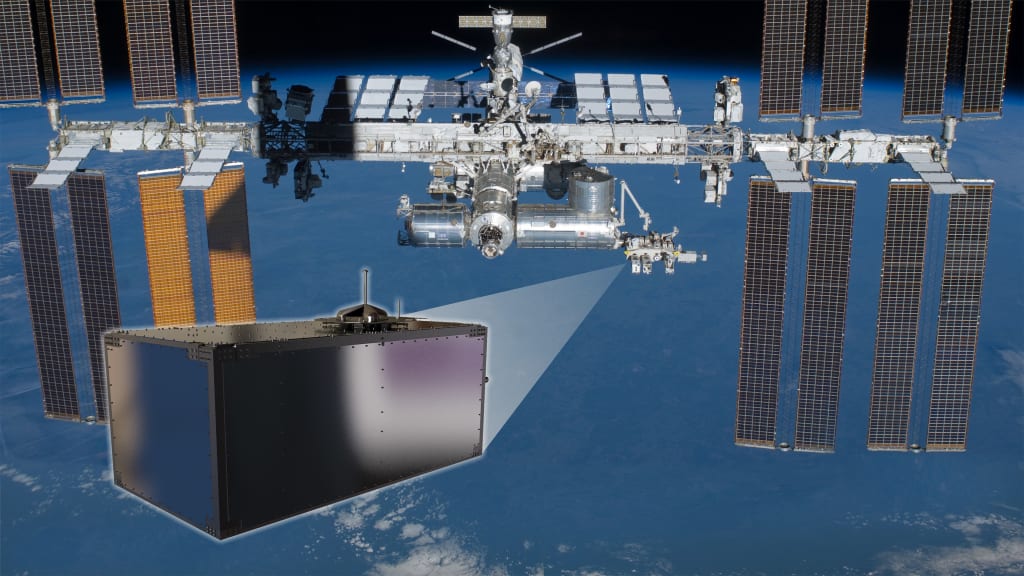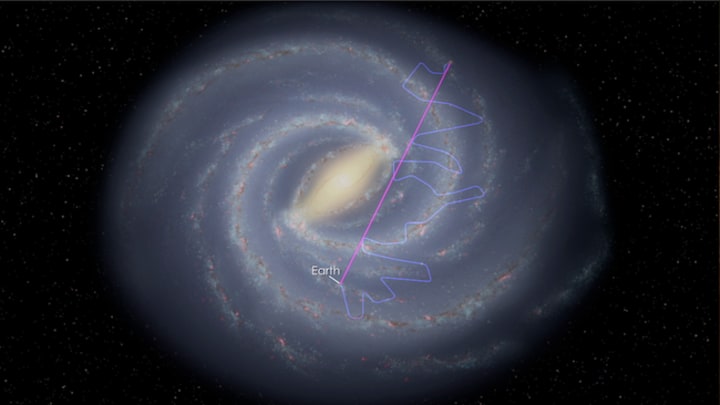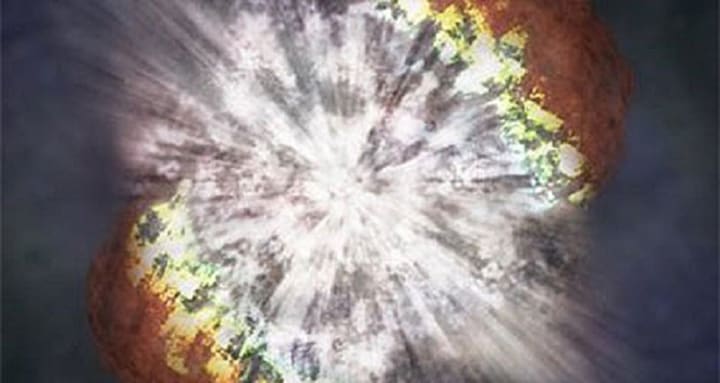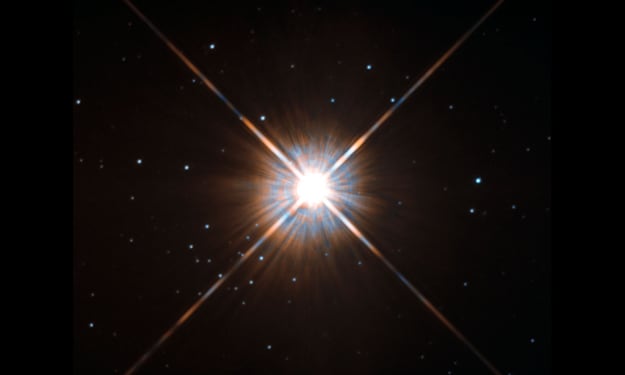Cosmic Rain: NASA Launches New Experiment
A new experiment launched by NASA August 14, 2017 will collect and study galactic cosmic rays.

NASA's Cosmic Ray Energetics And Mass for the International Space Station, aka ISS-CREAM, got underway August 14, 2017 by hitching a ride to the ISS with the SpaceX Dragon rocket in a successful launch. CREAM will be installed in Kibo, the Japanese Experiment Module Exposed Facility. The experiment is designed to probe the mysteries of cosmic rays, or cosmic rain.
What Is Cosmic Rain?

Because cosmic rays carry electric charge, their direction changes as they travel through magnetic fields. By the time the particles reach us, their paths are completely scrambled, as shown by the blue path. We can't trace them back to their sources. Light travels to us straight from their sources, as shown by the purple path. (Credit: NASA's Goddard Space Flight Center)
Cosmic rain is made up of cosmic rays, which consists of matter that comes from outside our solar system. High energy particles, typically made up of bits of atoms, (usually the nuclei,) speed through space at almost the speed of light.
Most of the cosmic rays we've measured so far are protons, which form the nucleus of hydrogen atoms. There are about ten times more protons than the next most abundant form, being alpha particles, or two protons and two neutrons, which form a helium nucleus. Together, that makes up about 99 percent of what we've observed so far.
Supernova Shock Waves

A supernova is a large explosion that takes place at the end of a star's life cycle.
Credits: NASA
Previous observations of cosmic rays have also found neutrons, neutrinos, and electrons, representing a range of other elements, including heavy lead. Theoretically, all natural elements are represented in the cosmic ray phenomenon. Cosmic rays carry either a positive charge, as in the case of protons, or a negative charge, as with electrons. As such, their passage through space is affected by magnetic fields around the Earth and solar system. The Earth is constantly bombarded with cosmic rain, but is largely protected by the magnetosphere.
Because of that magnetic field interference, it's impossible to tell where cosmic rays come from by direct observation. The working theory is that cosmic rays originate in the blast waves of a supernova, accelerated by the remnants of violent explosions that can go on for thousands of years after the original blast. This produces ever expanding clouds of dust and gas within a magnetic field. As the particles bounce around, some eventually escape the original magnetic field to become cosmic rays.
But, we know that can't be the whole story, because eventually, those cosmic rays would reach a maximum energy, and we already know that some of them generate energies higher than what even a supernova could produce—from about 1 billion electron volts to beyond 1,000 trillion electron volts (1 PeV). That means they could even originate beyond our galaxy, perhaps in quasars or bursts of gamma rays in interstellar space. Learning more about where they come from is one of the experiment's goals.
The new experiment will give NASA an unprecedented look at the cosmic ray phenomenon. Previous versions were developed as part of NASA's Balloon Program, which undertook seven separate flights from McMurdo Station in Antarctica of up to 12,000 feet between 2014 and 2016 for a total of 191 days. By installing CREAM on the ISS, it will increase exposure to cosmic rain by 10 times.
Along with added exposure to cosmic rays, CREAM now has brand new instrumentation contributed by Kyungpook National University in Daegu, South Korea, along with NASA Goddard, Pennsylvania State University, and Northern Kentucky University. It will also use refurbs of the silicon charge detectors and ionization calorimeters that were previously used in the Balloon Program.
Why study cosmic rays? Understanding them will give us more clues about our galaxy and beyond. Historically, cosmic rays have introduced scientists to new particles beyond the atom, including antimatter, the positron, and many more. The potential for unlocking new secrets of interstellar space is enormous.
CREAM will study cosmic rays as they smash into the detector instrumentation, providing information about their energy, electrical charge, and more. ISS-CREAM will study cosmic rain for a three year period.
About the Creator
Anya Wassenberg
I'm a long time freelance writer of both fiction and non-fiction.






Comments
There are no comments for this story
Be the first to respond and start the conversation.